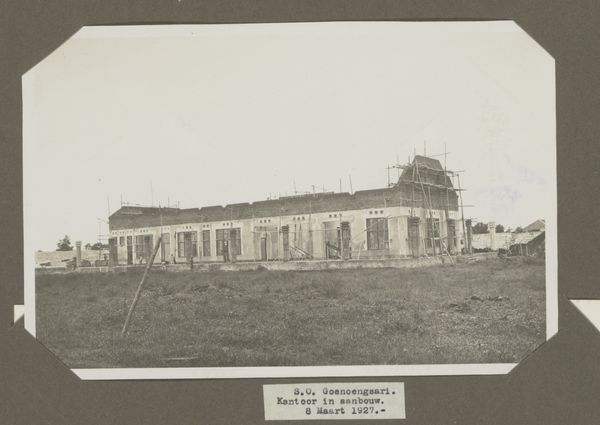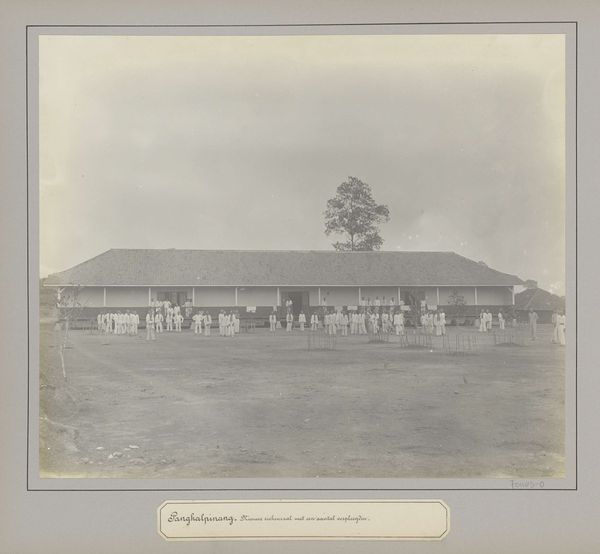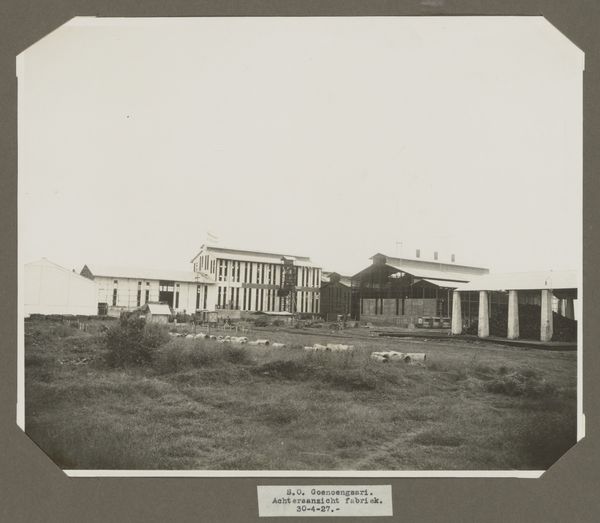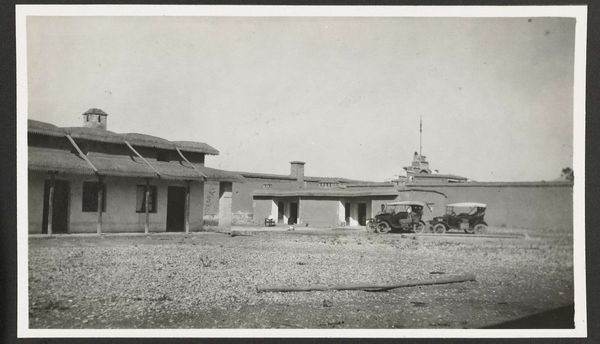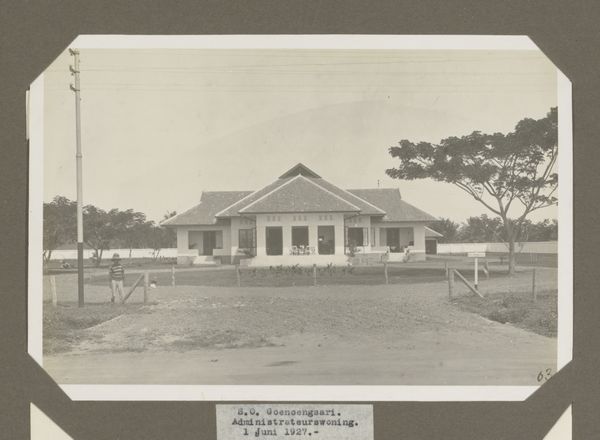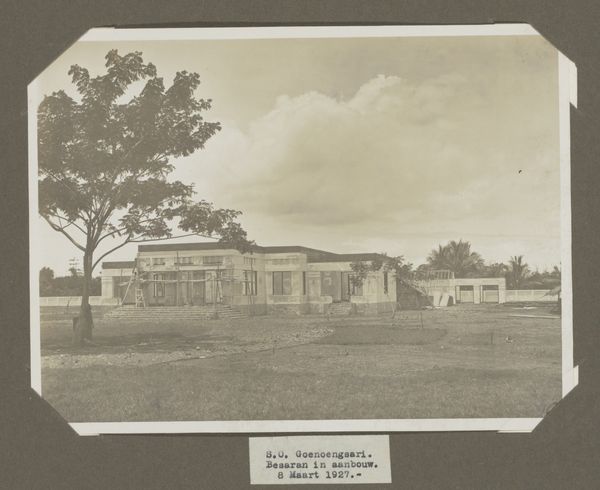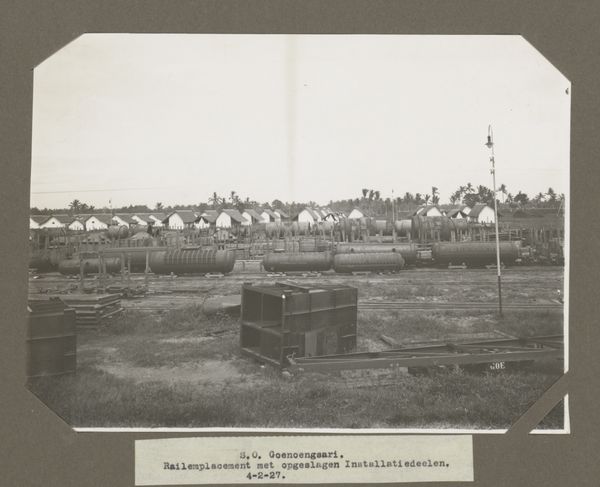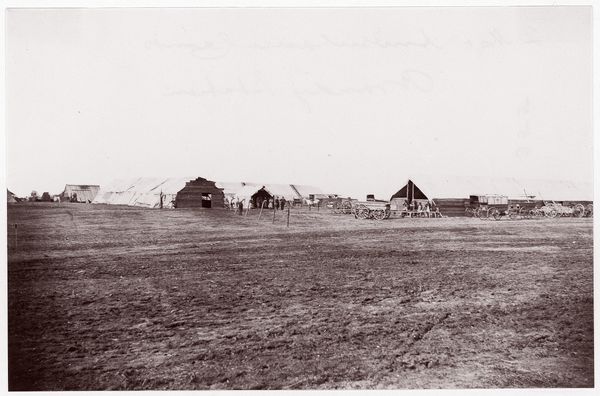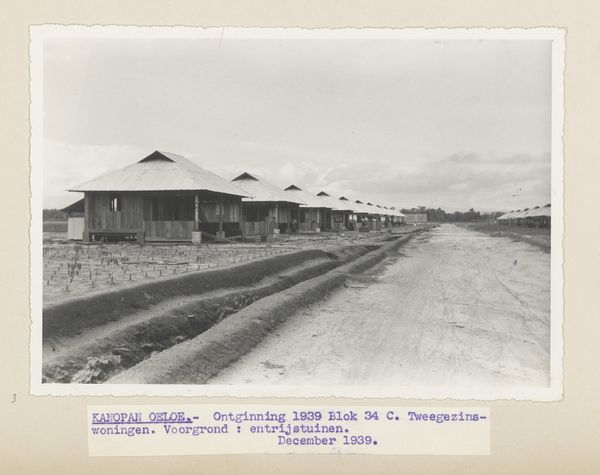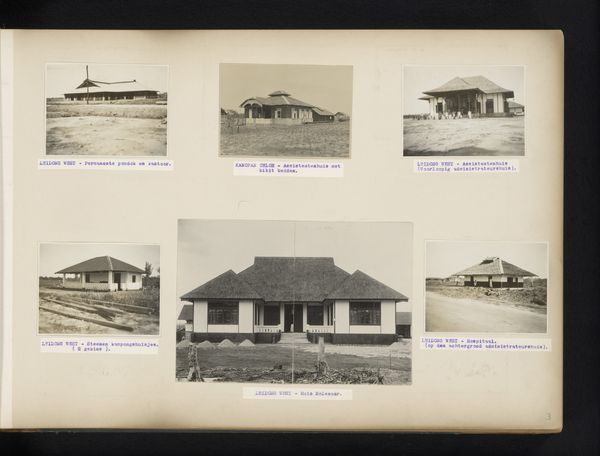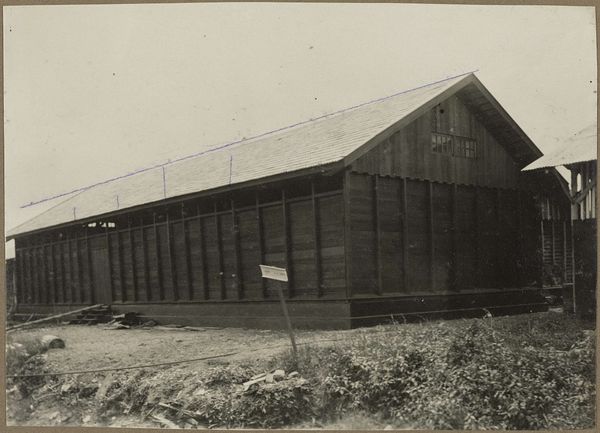
photography, gelatin-silver-print, architecture
#
landscape
#
archive photography
#
photography
#
gelatin-silver-print
#
architecture
Dimensions: height 80 mm, width 105 mm
Copyright: Rijks Museum: Open Domain
Curator: This gelatin-silver print, simply titled "Leidong West - Permanente pondok en kantoor", presents a straightforward image, likely created sometime between 1925 and 1939. Editor: There's a starkness to it, almost melancholic. The light is flat, and the scene feels strangely uninhabited, focusing attention on its geometric volumes and rigid forms. Curator: Precisely, and I find myself reflecting on the presumed context. This image probably functions as documentation. "Pondok en kantoor" translates from Dutch to "lodge and office", likely of a plantation or other colonial resource extraction site. This isn’t just architecture; it represents systems of power and exploitation. Editor: Structurally, the repeated vertical columns provide rhythm, yet their function is somewhat obfuscated by the light. The strong horizontal roofline is the main element defining the visual space of the building. What does this reveal about the design itself, given its environment? Curator: What's highlighted through its formal clarity are the strict organizational principles characteristic of colonial administration and plantation management. It speaks of imposed order. Consider the implied power dynamics; what narratives are left unseen? The voices of those who lived and labored in this landscape, unacknowledged within the colonial project itself. Editor: Absolutely. The photographic choices highlight this as well—the depth of field flattens the building within its environment. But consider that the vanishing point and strong architectural lines create a stable visual reference. This piece may be critiquing architectural representation itself. Curator: Precisely; by drawing attention to these representational tropes, the image inadvertently emphasizes how colonial enterprises sought to create their vision of permanency and authority through the built environment. How does it contribute to discourses around labor and ownership within specific historical and geographic settings? Editor: I'm intrigued by this potential dialogue of power inherent to form and visual language within the photograph; thank you for expanding my vision here. Curator: And thank you, I leave this with an interest in pursuing these insights in future dialogues on postcolonial discourse.
Comments
No comments
Be the first to comment and join the conversation on the ultimate creative platform.
